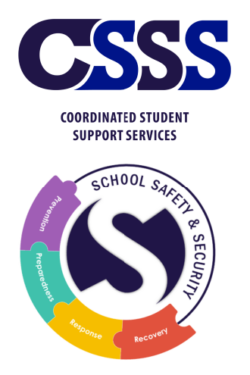Bullying Prevention and Intervention Strategies
School-Wide Prevention and Intervention
The most effective anti-bullying plan is designed and implemented with specific knowledge and skills consistently trained and used throughout the school district. This plan declares a school’s commitment to creating a safe, caring and respectful learning environment for all students. A bullying prevention and intervention plan adopted by the district might include specific behavior programs, forms used, philosophies of interactions, curriculum, or basic protocols. Effective anti-bullying programs or curriculum implement a scope and sequence of knowledge and skills to be learned by all students and requires school-wide involvement and support. Students involved in bullying situations benefit from additional instruction specific to their role as one using bullying behaviors, as a target, or as a bystander/witness.
Prevention Strategies
Prevention is best addressed by communicating and teaching the expected pro-social behaviors
- Clearly communicate policy and protocols for bullying behaviors to all staff, students and parents
- Empower bystanders to promote and take responsibility for creating a safe and welcoming environment
- Provide a means for safely reporting bullying behaviors
- Adopt a social skills and social emotional learning curriculum
- Monitor and adjust local bullying prevention program based on analysis of local school data and best practices in the field of bullying prevention (change in supervision, use of resources, methods of communication, reporting procedures, etc.)
- Improve school environment; students need to feel safe and supported by their school
- Work to foster positive student teacher relationships
The following paper contains a list of effective ways to improve school environment:
Voight, A. & Nation, M. (2016) Practices for improving secondary school climate: a systematic review of the research literature. Am J Community Psychology, 58, 174-191, doi: 101002/AJCP.12074
Program Development
Decisions regarding development of a bullying prevention program or plan may vary from changing supervision assignments to adopting curriculum depending on the unique needs of each school or district. Consideration may be given to the following ideas in determining the most effective program or plan.
- Conduct a review and alignment of current policies and prevention programs
- Collect, organize and interpret bullying behavior data
- Determine district needs and goals related to a safe and secure learning environment
- Identify effective programs, curriculum and/or strategies to develop pro-social behaviors and address bullying behaviors
- Recognize and celebrate successes
- Review program and sustain effort over time
- Ensure program is inclusive of all students
Components of Quality Bully Prevention Programs
- Focus on the entire school environment; comprehensive school-wide effort to identify and address problem areas and effectively intervene in bullying behaviors; change in student and staff ‘norms’, i.e., behavior expectations
- Data informed decisions. Students, staff, and parents participate in surveys or other methods of collecting experiences and perceptions of school climate and behaviors; program components and implementation are determined or modified after analysis of data
- All staff training awareness and skills training in bullying prevention and intervention includes administrators, all teachers, health professionals, support staff, para-educators, volunteers, substitute and student teachers, etc.
- Bullying policy is developed and enforced. Rules guide student behaviors – including children who bully and who are bystanders, consequences and skills training is consistently used to address bullying behaviors
- Prevention efforts are continued over time; new staff are trained; ongoing curriculum/instruction is provided across grade levels; regular communication with parents/community is provided; data is collected and reviewed annually
- Cultural factors are considered in the development of a prevention plan, specially for biased-based bullying
- Considerations are made for students who identify as sexual minorities or who are gender nonconforming
Bystander/Witness Interventions
Activating and empowering the bystanders/witnesses through education about bullying and practice (role plays) in intervening is the most impactful intervention. Group training for bystanders includes emphasizing that there is strength in numbers and that permission is given with the expectation to intervene respectfully and safely or report the bullying behaviors. Determining specific bystander interventions depends on analyzing the level of risk of a particular bullying situation.
Target Interventions
Targets need to be supported by a third party and have their reports taken seriously. Target interventions typically include teaching social skills such as friendship, assertiveness and anger management skills. Interventions for targets may be done one-on-one or in a support group. Targets should not be re-victimized by bring the target and perpetrator together to try to resolve the situation.
Bullying Behavior Interventions
School discipline policies, while needed to address student conduct issues and support positive student behaviors, are not sufficient to address bullying behaviors. Bullying behavior interventions may include teaching social skills such as friendship, empathy, and anger management in one-on-one settings, not in a group setting. Discipline should be addressed in private. Interventions focus on identifying the expected behaviors.
Below are resources where schools can find evidence-based programs and interventions. These resources also provide further information on bullying and tips on how to prevent it.
Blue Prints Program: https:///www.blueprintsprograms.org/program-search/
What Works Clearinghouse: https://ies.ed.gov/ncee/wwc/
RTI network: http://www.rtinetwork.org/
Intervention Central: https://www.interventioncentral.org/
Kinder and Braver World Project: Bullying Prevention 101 for Schools: Dos and Dont’s: http://ssrn.com/abstract=2197951
StopBullying.Gov:
https://www.stopbullying.gov/research-resources/index.html#researchsummary






